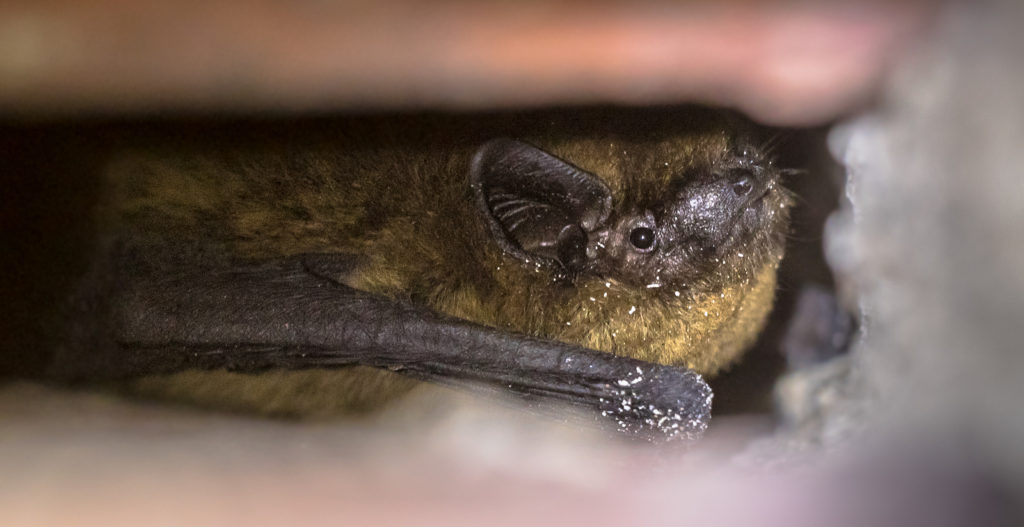A wildlife rescue enthusiasts, we stress the importance of bats and their role in our Eco-systems and economies. However, that does not mean we condone bat intruders! Bats in the house is an uncomfortable, and even scary, situation; mostly because you are unfamiliar with the species, and unsure of what to expect in terms of behavior.
If you suspect that bats are a nuisance problem around your property, continue reading to help you learn what you need to know with these frequently asked questions about bats in the house.

How Do Bats Get Inside of a House?
Bats only require a very tiny opening to enter your property. In fact, a gap as little as 3/8th of an inch are all they need to gain access to the common areas the target, such as attics, crawl spaces, garages, chimneys, roofs, and various other areas of a property. Often times, bats use roof and ridge vents, gables, soffits, and chimneys to get inside; however, they can also get lucky with a torn screen door, an open window, loose roof shingles, broken siding, and similar opportunities.
Where Do Bats Hide in a House?
The most common areas for bats to roost inside residential properties are attics and wall voids. They are also commonly found in crawl spaces, roof accessories (flashing, vents, turbines, etc.), and chimneys. Outside of a house, bats are commonly found roosting in log piles, sheds, garages, barns, tree houses, hollow trees, and tree cavities.
How Can I Tell if I Have Bats in the House?
One of the most common signs of bat presence in a house, and often the initial once notice, is hearing strange noises in the walls or ceilings, such as squeaking, chirping, and chattering. You may also hear fluttering noises from their wings as they shuffle around their roosting area. Also, visually spotting bat guano (dropping) or actual bats, is another tell-tale sign that bats are inside. Additional signs include oil stains around entry points, foul odors lingering indoors, and yellow and brown-like stains on ceilings and walls.
Will a Bat Attack Me? My Pets?
Bats are afraid of humans and pets more than you are of them. For this reason, they do everything they can to avoid interaction with either. In the case that a bat is nursing or protecting her young, or ill, they may defend themselves by biting if they are provoked in some way. Often times, curious dogs and cats fall victim to an angry bat trying to fend them off. Pet vaccinations are critical for reasons just like this, and much more.
Do Bats Have Rabies?
Although bats are known carriers of the Rabies virus, not all bats are infected with Rabies. However, you should always treat all bats as if they are actively infected in order to remain as protected as possible. There is no reason to take a chance. Rabies is 100% fatal, and also 100% preventable. Get your pets vaccinated annually, and yourself as well if you work in an environment where exposure is more likely.
What Do I Do if I Find a Bat in the House?
If you find a bat in the house, first get all people and pets to a guarded room. Then open all windows and doors, and gently encourage the bat to fly out of the house using a broom or long handled-device. Do your best not to touch the bat at all; instead, gently glide the broom against the surface near the bat to encourage it to fly away. If this does not work, your next step is to contact a local and licensed Virginia bat removal and control company for emergency bat extraction service.
Call Virginia Bat Pros

Call Virginia Bat Pros at 804-729-9097 for safe and humane bat removal and control assistance in Old Dominion. We serve all of Virginia and its surrounding areas. We offer 24 hour bat removal, as well as, numerous residential and commercial bat exclusion services, such as bat cleanup and restorations for bat damages. We even provide insurance work! Contact us today for a free estimate.
